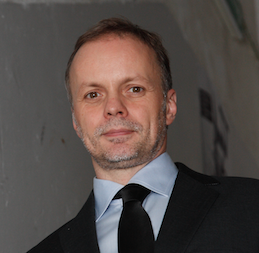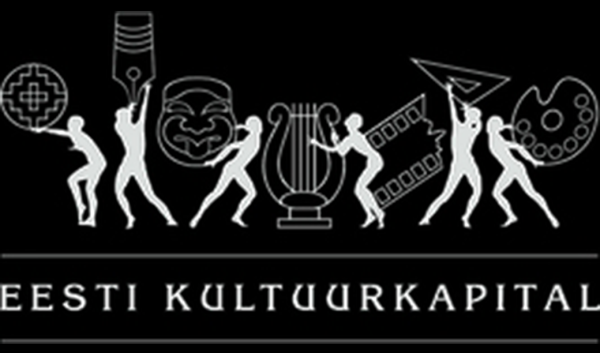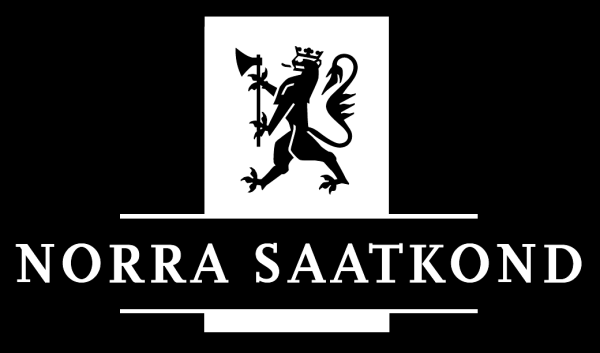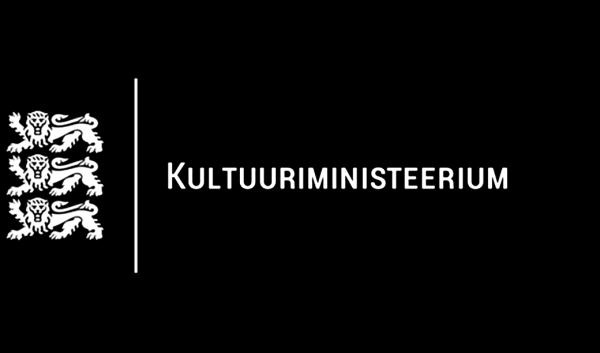Current Challenges for Architects and Architecture
MAJA, 01.02.2014
Martin Melioranski
Martin Melioranski: You are directing the Research Centre for Architecture and Tectonics (RCAT) at the Oslo School of Architecture and Design. Tectonics is an interesting notion. In recent times it was brought back to attention by Kenneth Frampton in his influential book “Studies in Tectonic Cultures” in the middle of the 1990s. At that time some people at Columbia University in New York, who were involved with early computational approaches to architectural design, started to use this word a lot. I remember Hani Rashid using it when I met him in 1999. How do you define tectonics?
Michael Hensel: The title of the research centre was already decided by the Oslo School of Architecture and Design when I was entrusted with building up RCAT. Yet, which approach to the notion of ‘tectonic’ should be pursued was not thought through at all. I therefore embarked on reframing the notion of ‘tectonics’ for our specific situation, commencing from both the specific local circumstances of Norway and Kenneth Frampton’s seminal writings. Frampton reiterated Semper’s distinction between ‘stereotomics’ – earthworks, heavy mass operations– and ‘tectonics’ – lightweight component based assemblies – and pointed out that the relation between these two systems and the related operations can vary greatly according to local circumstances. In Norway, where topsoil tends to be a thin layer atop of hard granite or gneiss rock, stereotomic operations require an enormous effort and energy investment. It is this condition in conjunction with the abundance of wood as a building material that underlies the fact that most architectures until recently were made mainly from wood (interestingly the roots of the word tectonic lay in wood crafting and joining). Today concrete is abundant, as well as other heavy mass material systems, but at which cost and at what consequences in the long term? What few consider is what to do with all the concrete foundations and structures in the context of continual urban transformation. At any rate, an interesting condition occurred for us when the previous Norwegian government issued two policies in relation to the built environment: [i] do more research and [ii] use more wood. When learning this, my wife Defne Sunguroğlu Hensel and I immediately started research into wood in architecture at the school in Oslo (a line of study that was surprisingly entirely absent from the school). We introduced a biomimetic approach to wood and coupled it with traditional knowledge and craft skills, as well as with new scientific insights and contemporary computational modelling and analytical tools. In addition we embarked with our colleagues Søren Sørensen and Joakim Hoen on a quest to understand local climate variation in Norway, which tends to be quite extreme, and to formulate an approach that might be termed intensely local architecture and tectonics. This also implies that materials are considered in their local variation and related capacities. This is of particular interest in relation to wood. Mono-cultural forestry does not really have a place in this, nor should it given the environmental problems it causes. This begins to be increasingly interesting when one applies this approach to other localities and circumstances and if one considers that this is delivering an intensely useful application to what is termed ‘non-standard architecture’. The latter can now be considered in a wide scope of performative terms, rather than in the narrow spectrum of exclusive formal expression and idiosyncratic architecture. In other words, this integrative approach brings several strands of inquiry and experimentation in architecture together into one theoretical and methodological framework that is strongly rooted in practice.
MM: Many of the people involved in so-called non-standard approaches to architecture tend to refer to themselves as computational designers rather than architects. In Estonia ‘design’ usually implies industrial design, graphic design and maybe in a more peripheral sense architectural design. Do you draw a line between what you consider design and what you consider architecture?
MH: It is useful to consider the term ‘design’ as a wider frame into which a variety of activities fall, including architecture. When the word ‘design’ is used in a specific way it always comes with an additional qualifier; i.e. industrial design indicates a discipline, whereas sustainable design indicates objectives. ‘Research-by-design’ implies a pluralistic field of inquiry with particular modes and modalities of inquiry. In architecture the notion of research by design caused a great deal of confusion with all architects claiming that a good part of their work actually constitutes ‘research’. Clearly this is counterproductive. Now it seems that it is accepted that research is entirely necessary but not inevitably inherent in the activities of an architect. Together with Frederic Nielsen, head of the school of architecture at Chalmers University of Technology, we are currently preparing a book that examines sixteen practices of different sizes, and how these conduct research, which kind of questions they pursue, and how they resource research in practice. Other people are mapping corresponding tendencies in other creative disciplines. From this, we can be sure, will arise some clarity about the scope of shared and differing modes and modalities of research by design in different creative disciplines. Some experts, such as the US-American scholar Harold Nelson, speak of a ‘designerly way’ as a shared aspect between creative disciplines that is different enough from the sciences and humanities to establish a context of inquiry and expertise of its own. Therefore it can be useful to maintain the word ‘design’ as an overarching term that becomes specific through additional qualifiers. This approach enables an enriched and focused discourse.
MM: One might distinguish between several approaches of conducting design-related research. What has been talked about at our school lately in connection to certain people like Ranulph Glanville and Leon van Schaik are approaches of a reflective practitioner with research and design connected from within. It is not someone else analysing your design decisions, but, instead, you seeking to re-establish or re-think your own kind of methodology, and therefore approaches to design.
MH: …at the same time you are always in dialogue with others. This kind of externalized dialogue has an important role: it allows you to understand where you stand relative to other people in your field or in other fields when the undertaking is interdisciplinary. This also yields the question as to what is core knowledge in architecture. It is a lot to do with how architects are trying to understand not only their own individual practice but also practice and the discipline at large. Dialogue and discursiveness is bound to be more productive than having a star-architect telling you how it’s done. I do not really trust declarations of a singular new paradigm, style, movement or ‘-ism’. Instead I try to raise questions and to discuss specific ways of approaching them, hopefully initiating discussion, so that we can embark concurrently on a collective pursuit and a range of individual trajectories. In relation to architectural discourse I try to take an integrative approach. Yet, there have been too many pseudo-discourses over the last few decades that fragment the field of discussion in architecture into ever more specialist or frenzied territories that manifest the desire for creating recognition, prestige and legacy. Computational design in architecture to me is not a discourse per se; instead it is a means by which we can experiment so as to address or yield architectural questions, discourse and insight.
MM: To my mind the very pair of words – computational design – has been fixated on the ‘digital’, instead of ‘computational’ in the wider sense.
MH: One of the interesting notions today is “associative design”. When you have a series of things that are interrelated and you change one, what happens to the others? To my mind the potential of associativeness is that it dissolves the fixation with the architectural object. It is instead about nested object-context relations as Christopher Alexander pointed out.
Now we can make interrelations tangible to a student at an early stage of architectural education. In so doing it is possible to overcome some of the shortcomings of subject-based teaching, where you learn a whole series of subjects that are all separated from one another. Nobody tells you what building physics really has got to do with design or what architectural history has got to do with your studio work. If this new possibility is well enough understood then perhaps we are ready to ‘compute’. In this sense architectural education needs to be less compartmentalized than subject-based teaching, and wider reaching than project-based teaching. Such ideas are, however, rather tricky to implement in education that has turned into a dead-and-dry managed service industry that avoid risk and liability, and the ability to critical reflect and boldly project.
MM: People from our and especially from other fields seem to think of our discipline more as a kind of art. Recent discussions, teaching and research efforts seem to gradually change this perception into a more differentiated understanding of what architecture entails (without forgetting artistic explorations that have contributed to our discipline). The engagement with accurate tools and technologies, such as computational methods and robotics, etc. seems to positively contribute to this.
MH: Architects often display one out several disadvantageous tendencies; they either obscure architectural design so as to assume the mantle of the artistic inexplicable genius, or they are overly narrow-focused so as to assume the mantle of the incontestable specialist, and often they tend to reinvent the wheel due to a pronounced lack of reference.
Once in a while it is of use to recall stages of the development of architecture as a discipline (although some dispute that architecture is indeed a discipline). Architecture has over time always been multi-facetted and in contact with other subject areas. Already Vitrivus included in ‘De Architectura’ besides various types of architecture also building materials, water systems, science influencing architecture, machines, and so on. From the 15th to the 18th century architecture was a field among many pursued by visionary polymaths such as Leon Battista Alberti, Francesco di Giorgio Martini, Leonardo Da Vinci, Giorgio Vasari, Claude Perrault, Nicolas-François Blondel, Philippe de La Hire, to name but a few. These polymaths excelled in individual combinations of painting, sculpture, poetry, philosophy, linguistics, anatomy (recurrently in search of ‘bio-inspired design), botany, mathematics, physics, astronomy, geology, cartography, history, mechanics, military engineering, diplomacy, etc. These polymaths wrote pioneering treatise in diverse subjects, as well as on architecture. From the 18th century onwards architecture began to be formulated as a discipline along with other ones, such as biology, exchanging concepts, methods, taxonomies, etc.
So architecture was not inward looking and detached, until some made a point of detaching.
With detachment came single mindedness and dogmatism. The fallout of Johnson, Hitchcock and Barr’s International Style Exhibition is still upon us: style/form versus function. The opposition to Johnson’s approach, the Structural Studies Associates led by Bucky Fuller, continued a systems-approach to the relation between architecture and environment. One of the members, Theodore Larsen, stated that ‘If we are going to approach, as we must, a totality in the development of the environment, this will necessarily involve a re-examination and redefinition of all the components of the environment insofar as they are perceived and experienced by man.’ This should be our guideline today and not the continual reinforcement of entrenched dogmas that delimit our outlook. Therefore we must recollect what has been sidelined by prevailing, yet reductive trends.
These may have served as intellectual vehicles that were useful for a time, but now begin to constrain us. Moreover, we have a big problem with homogenizing legislation and standards that are put into place that exclusively operate on entrenched dialectics.
MM: It is not just about architecture or specific to architecture – many more-or-less established disciplines tend to become dogmatic about specific things. In physics it’s the Standard Model. CERN had to be built in order to find the Higgs boson and thus to verify the Standard Model. Upfront everybody tries to maintain their turf. Maybe since our discipline has been involved in these many aspects of life for so long then we ourselves in a way have to clarify, and also tell it to the others that we have something that might help not only when designing a new building but also rethinking certain relationships in society. Yet, how do we use the good part from our discipline and avoid misuse?
MH: In other words how can architecture be political without being “badly” political?
MM: I remember Frederic Jameson stating in 2000 at the last ANY conference that “architecture as politics always fails!”
MH: I understand being political in a slightly broader way. I can think of several ways of engaging. The first concerns forms of political representation. Today one of the main drivers of conflict and violent struggle is the fact that there exists really only one dominant recognized form of collective political representation: the nation-state. The struggle to accomplish this can be immensely difficult.
This problem could be addressed by way of thinking up different forms of political representation, such as the Sami people in Norway, Sweden and Finland that have some level of autonomy, three parliaments in the respective countries and a flag, but no separate nation state. As architects we can engage in thinking more broadly about new forms of representation and give them an architectural expression. The second possibility concerns locally specific cultural practices and the way they relate to architecture and the built environment at large. Take for instance the ‘right to roam’ or its Scandinavian version the ‘all men’s right’ that is a common practice of public use of private land. What would cities and architectures look like that are based on such practices? Perhaps one may then find another inroad to the vital question of cultural and social sustainability.
MM: We have talked about many things, and not so much about 3D technologies. Maybe it’s not essential?
MH: Again I think there is a political dimension to that. Imagine planners and developers would be obliged to deliver in the public consultation phase of projects computational models which anybody with a hand-held device could visualize in a comprehensible manner. This could effectively engender participatory processes. That is an increasingly important aspect in our sprawling and densifying urban environments, although it is easy to see why planners and developers would not want to do this.
MM: It is likely that planners and developers will be hesitant about this kind of process, because very often the public has stopped many projects.
MH: Yes, that may be true, but what this indicates is not that participation is faulty per se, but that we might need to develop better processes, criteria and tools for participation. Some projects should may be not have been stopped, who knows, depends on the criteria for evaluating this. But on the whole don’t we as architects quite often complain that the general public takes very little interest in architecture?
Often public opinion is simply disregarded or met with cynicism and therefore it is no wonder that people loose interest. The ‘Bar Code’ project in Oslo, for instance, was one of the most criticised projects in the history of Oslo with 30.000 people signing up against the project, which is seen to cater only for the affluent in what is seen as a short-lived formal language and lifestyle branding. The project was implemented anyways and now the head of the planning office claims the project is a full success because nobody complains anymore. Now that is cynicism of the highest order: implementation against public protest and when the deed is done and people have lost faith in the impact of expressing their views to shout ‘success’ into their stunned faces. Here is another need and opportunity to set out new, open and transparent process that actually deserves the label ‘democratic’ instead of ‘duplicity’.
MM: It was interesting to see how Oslo has similar problems as Tallinn. Not to mention some bad roads somewhere in the middle of the most expensive district but also how architects struggle to find sensible solutions in building next to the seashore. Here it the harbour area is still largely open.
MH: An opportunity for an ‘all men’s right’ seashore urbanism a la Estonia that involves the public and its interest on many levels.




